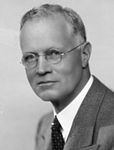Canadian federal election, 1940
|
|
|||||||||||||||||||||||||||||||||||||||||||||||||||||||||||||||||||||||||||||||||||||||||
|---|---|---|---|---|---|---|---|---|---|---|---|---|---|---|---|---|---|---|---|---|---|---|---|---|---|---|---|---|---|---|---|---|---|---|---|---|---|---|---|---|---|---|---|---|---|---|---|---|---|---|---|---|---|---|---|---|---|---|---|---|---|---|---|---|---|---|---|---|---|---|---|---|---|---|---|---|---|---|---|---|---|---|---|---|---|---|---|---|---|
|
|||||||||||||||||||||||||||||||||||||||||||||||||||||||||||||||||||||||||||||||||||||||||
|
|
|||||||||||||||||||||||||||||||||||||||||||||||||||||||||||||||||||||||||||||||||||||||||
|
245 seats in the 19th Canadian Parliament 123 seats needed for a majority |
|||||||||||||||||||||||||||||||||||||||||||||||||||||||||||||||||||||||||||||||||||||||||
|
|||||||||||||||||||||||||||||||||||||||||||||||||||||||||||||||||||||||||||||||||||||||||

|
|||||||||||||||||||||||||||||||||||||||||||||||||||||||||||||||||||||||||||||||||||||||||
|
|||||||||||||||||||||||||||||||||||||||||||||||||||||||||||||||||||||||||||||||||||||||||
William Lyon Mackenzie King
Liberal
William Lyon Mackenzie King
Liberal
The Canadian federal election of 1940 was the 19th general election in Canadian history. It was held March 26, 1940, to elect members of the Canadian House of Commons of the 19th Parliament of Canada. Prime Minister William Lyon Mackenzie King's Liberal Party was re-elected to their second consecutive majority government.
The election was overshadowed by the Second World War, which caused many Canadians to rally around the government. In response to this, the Conservative Party of Robert Manion ran on a platform advocating the creation of an all-party national unity government and ran under the name "National Government" in this election. Though Manion was personally opposed to conscription, the Liberals faced intense pressure in Quebec on the question and promised not to institute the measure. This promise was to haunt the Liberals as they faced increasing pressure from the military and especially from English Canada to bring in the measure. To release him from his 1940 promise, King called a plebiscite in 1942 on the question. See also Conscription Crisis of 1944. It was the most successful election for the Liberal Party in its history, in which it captured 73% of seats in the House of Commons.
...
Wikipedia




